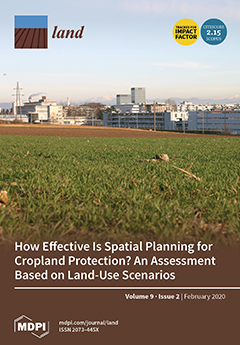Restoration of marginal and degraded lands is essential for regaining biodiversity and ecosystems services, and thereby attaining UN-Sustainable Development Goals. During the last few decades, many fast growing and hardy trees have been introduced worldwide to restore the marginal and degraded lands for ecosystem stability. Unfortunately, most of these introduced species have become invasive and invaded the nearby productive systems, leading to significant biodiversity loss and land degradation. Therefore, it is imperative to conduct a sustainability analysis of the introduced species for necessary course correction and also for preventing the future utilisation of such species for land restoration. With this backdrop, the present study was conducted to analyse the socio-ecological impacts of a widely used species, i.e.,
Prosopis juliflora (Sw.) DC based restoration of degraded land of Lucknow, North India. For this, ecological (soil quality and plant biodiversity) and social (livelihood) indicators have been studied over a period of two years (2015–16) through direct field sampling and questionnaire-based surveys. While there was a positive difference (
p < 0.01) in the key physico-chemical properties of the
P. juliflora-invaded soil than the non-invaded site, the belowground microbial load was significantly lower (19.46 × 10
6 g
−1 of soil) in invaded land as compared to the non-invaded one (31.01 × 10
6 g
−1). Additionally, the invasion of
P. juliflora had significantly reduced the biodiversity by displacing the local flora such as
Achyranthes aspera L.,
Amaranthus spinosus L.,
Cynodon dactylon (L.) Pers,
Euphorbia hirta L., etc. The invaded area had only eight plant species having an effective number of species (ENS) of 7.2, whereas the non-invaded area had the presence of 26 plant species with an ENS of 23.8. Although the local people utilised
P. juliflora as fuelwood mostly during summer and winter seasons, the invasion resulted in a fodder deficit of 419.97 kg household
−1 y
−1 leading to resource scarcity in the invaded area in comparison to the non-invaded area. Ecodistribution mapping clearly showed that
P. juliflora is already found in most of the tropical and subtropical countries (~103) including in India and has become invasive in many countries. Therefore, we recommend that
P. juliflora must be wisely used for the land restoration programs targeted during the United Nations Decade of Ecosystem Restoration (2021–2030) as this species has invasive traits and thereby reduces the ecosystem sustainability of the invaded areas.
Full article





